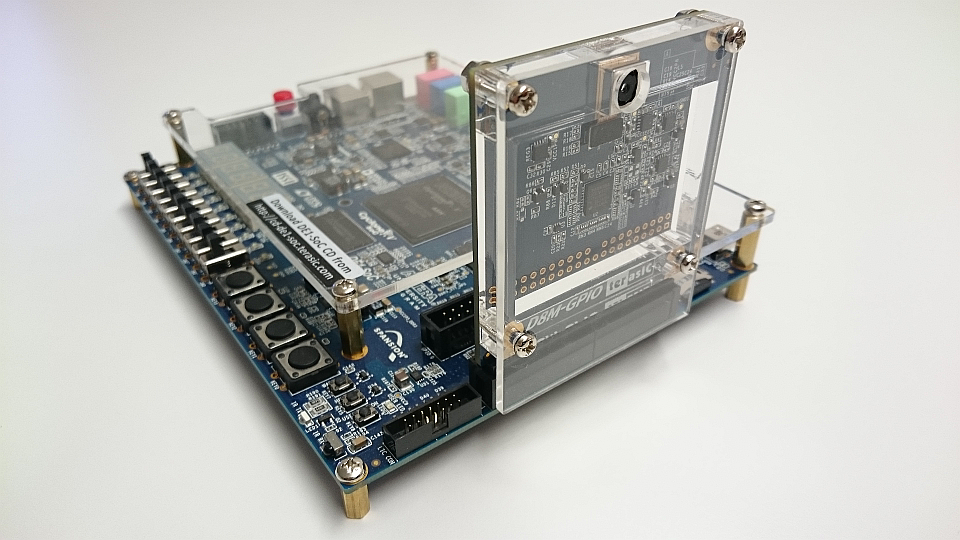Institute of Embedded Systems, a research institute of Zurich University of Applied Sciences generated a reference design for a low latency, highly reliable wireless video transmission from a battery operated camera to an iPad or iPhone. The design is suitable for everything that requires a robust low latency video link such as vehicle remote control, industrial applications, automotive applications and others. Since the transmission is Wi-Fi based, no extra hardware to receive the video stream on an iPad or iPhone is required.
The camera module consists of an Intel SoC-FPGA with integrated single core ARM-A9 with flexible interface to various types of cameras and SDIO interface to the Wi-Fi module. Optional LCD interfaces or an SD-card slot allow monitoring and recording of the video at the camera module.

The low latency video compression algorithm is nearly lossless and always transmits full frames. While the compression is implemented in the FPGA fabric, control is accomplished by a Linux operating system in the ARM-A9.
Error correction avoids pixel and frame drops even if Wi-Fi transmission is problematic, like in busy areas or in difficult topography. The Wi-Fi standard includes automatic retransmission of lost packets. However, there still remains a chance that packets are lost. To increase reliability even further, we add redundant packets. This slightly increases the bandwidth however does not add significant latency.
To receive the video stream, it is enough to install a viewer app, no extra hardware is required. Video decompression and error correction are solely handled in the GPU and the CPU of the iPad.
The FPGA IP requires only 2.9k logic cells, which is 18% of a 15k logic cell Intel Cyclone-V SoC.
The transmitter IP controls an 802.11n Wi-Fi module like the Texas Instruments WL1835MOD, however other TI modules are supported as well.
The measured glass to glass latency can be as low as 65 ms (2 video frames at 30 fps). However, dependent on the selected compression rate and the Wi-Fi channel quality, the latency might be higher.
For more information, contact Tobias.Welti@zhaw.ch